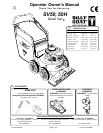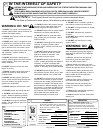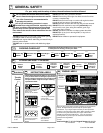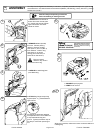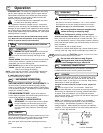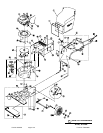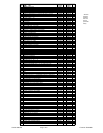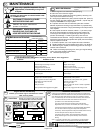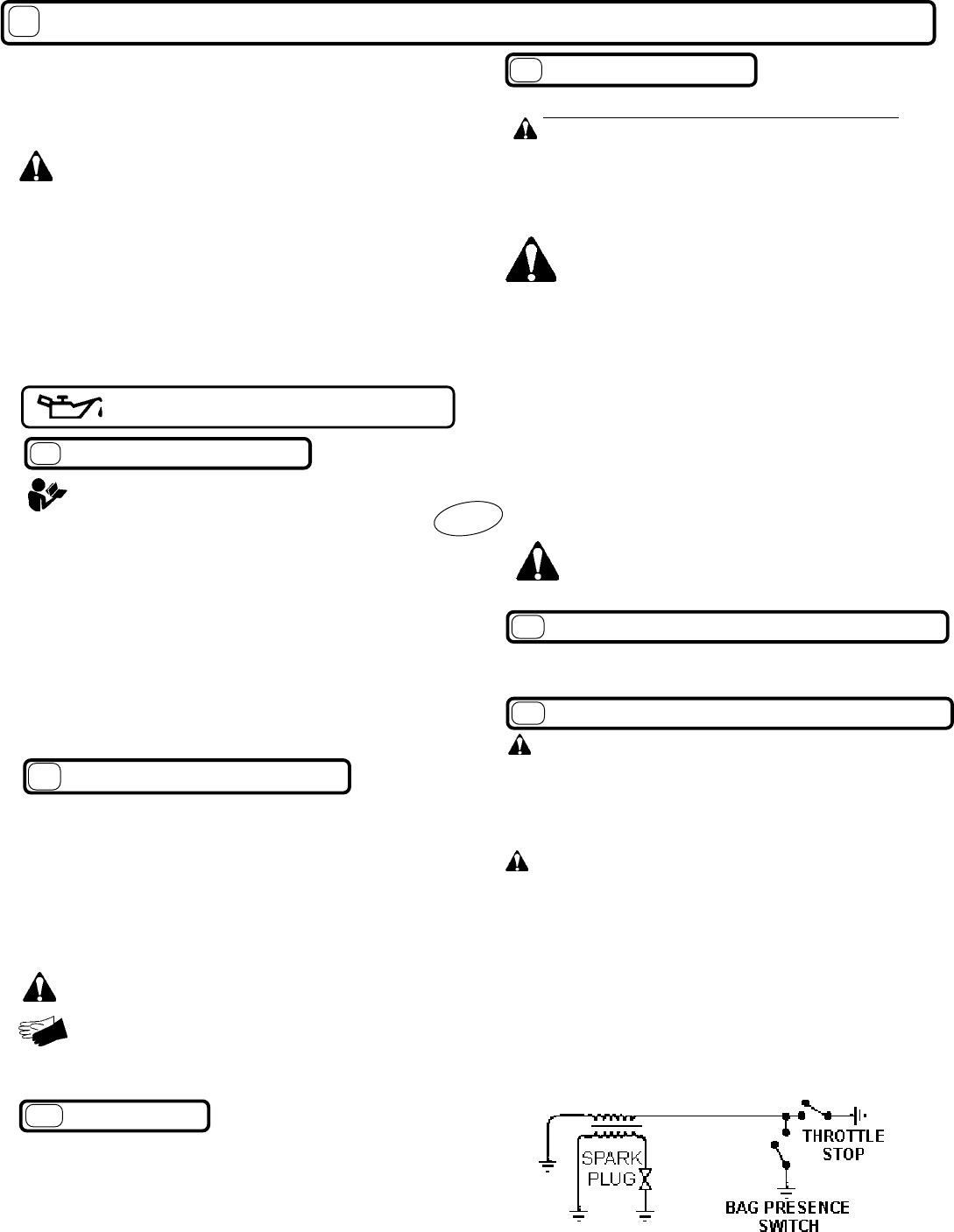
Part No. 890379 Form No. F081398A
Page 5 of 8
PUT OIL IN ENGINE BEFORE STARTING.
16
Operation
ENGINE: See engine manufacturer’s instructions
for type and amount of oil and gasoline used.
Engine must be level when checking and filling oil and
gasoline.
ENGINE SPEED: Controlled by throttle lever on the handle.
Under normal conditions, operate at minimum throttle to
accomplish your current cleaning task.
FUEL VALVE: Move fuel valve to "ON" position
(Honda only).
CHOKE: Operated with throttle control (Honda).
Post to prime (Briggs & Stratton).
STARTING
16.1
VACUUM NOZZLE HEIGHT ADJUSTMENT: The
vacuum nozzle is raised and lowered by pulling slightly
upward on handle and pulling height adjust T-Handle (item
23) at operators left hand. Lift handle up or down to desired
height, then release T-handle.
FOR MAXIMUM PICKUP: Adjust nozzle height as
close to debris as possible, but without blocking airflow into the
nozzle. NOTE: Never bury nozzle into debris.
CLEARING A CLOGGED NOZZLE
& EXHAUST: Turn engine off and wait for impeller
to stop completely and disconnect spark plug wire.
Wearing durable gloves, remove clog. Danger, the
clog may contain sharp materials. Reconnect spark
plug wire.
VACUUMING OPERATION
16.2
Note: Frequently empty debris to prevent bag overloading with
more weight than you can lift.
Bag liners are included and available for use in various conditions
where debris will be vacuumed.
(see Bag Liner Options shown on page 1).
DO NOT place bag on or near hot surface, such as engine.
Debris bags are normal replaceable wear items.
DEBRIS BAG
16.3
Using two people to lift machine is recommended. Lift holding the
handle and front of nozzle. Secure in place during transport.
Never store engine indoors or in enclosed poorly venti-
lated areas with fuel in tank, where fuel fumes may reach an
open flame, spark or pilot light, as on a furnace, water heater,
clothes dryer or other gas appliance.
If engine is to be unused for 30 days or more, prepare as
follows:
Be sure engine is cool. Do not smoke. Remove all
gasoline from carburetor and fuel tank to prevent gum deposits
from forming on these parts and causing possible malfunction
of engine. Drain fuel outdoors, into an approved container,
away from open flame. Run engine until fuel tank is empty and
engine runs out of gasoline.
NOTE: Fuel stabilizer (such as Sta-Bil) is an acceptable
alternative in minimizing the formation of fuel gum deposits
during storage. Add stabilizer to gasoline in fuel tank or
storage container. Always follow mix ratio found on stabilizer
container. Run engine at least 10 min. after adding stabilizer to
allow it to reach the carburetor.
Do not store with debris in bag. Organic
debris generates heat during decomposi-
tion and could damage the bag or start a fire.
16.5
HANDLING & TRANSPORTING:
STORAGE
16.4
Be sure engine has come to a complete stop
before removing or emptying bag!!
This vacuum is designed for picking up trash, organic
material and other similar debris
(see Safety Warnings page 2-3).
Many vacuums are used where dust is mixed with trash. Your
unit can intermittently vacuum in dusty areas. However, following
these rules will help maintain your machine's ability to vacuum in
dusty conditions:
•Run machine at idle to quarter throttle.
•Machine or pressure-wash debris bag if normal cleaning does
not fully clean bag. Bag should be thoroughly dry before use.
Having one or more spare Felt Filter (890435) is a good way to reduce
down time while dirty bags are being cleaned.
IF YOUR UNIT FAILS TO START:
See Troubleshooting on page 8.
Vacuumed leaves, grass and other organic material from your own
yard can be emptied into a pile or composter to provide enriched
soil for later use as fertilizer in gardens and flower beds
Note: Allow green chips to dry before spreading around living
plants.
COMPOST
16.10
Hint!
NOTE: Outer bag and rod (items 1 and 3) MUST depress the
bag presence switch (item 17) for the unit to start. See fig.1
fig 1.
INTENDED USE: This machine is designed for vacuuming
leaves, grass clippings and other types of organic litter as
well as debris mixed with cans, bottles and small amounts
of sand; however, vacuuming cans, bottles and sand will
affect the longevity of your machine.
Inspect machine work area and machine before operat-
ing. Make sure that all operators of this equipment are
trained in general machine use and safety.
Do not operate if excessive vibration occurs. If excessive
vibration occurs, shut engine off immediately and check for
damaged or worn impeller, loose impeller bolt, loose impeller
key, loose engine or lodged foreign objects. Note: See parts
list for proper impeller bolt torque specifications. (See trouble
shooting section on page 7).
Like all mechanical tools, reasonable care must
be used when operating machine.



